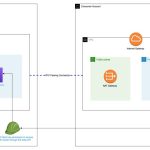In NLP, the transformer mannequin structure has been a revolutionary that significantly enhanced the power to know and generate textual info.
On this tutorial, we’re going to dig-deep into BERT, a widely known transformer-based mannequin, and supply an hands-on instance to fine-tune the bottom BERT mannequin for sentiment evaluation.
BERT, launched by researchers at Google in 2018, is a robust language mannequin that makes use of transformer structure. Pushing the boundaries of earlier mannequin structure, resembling LSTM and GRU, that had been both unidirectional or sequentially bi-directional, BERT considers context from each previous and future concurrently. That is because of the revolutionary “consideration mechanism,” which permits the mannequin to weigh the significance of phrases in a sentence when producing representations.
The BERT mannequin is pre-trained on the next two NLP duties:
- Masked Language Mannequin (MLM)
- Subsequent Sentence Prediction (NSP)
and is mostly used as the bottom mannequin for varied downstream NLP duties, resembling sentiment evaluation which we are going to cowl on this tutorial.
The ability of BERT comes from its two-step course of:
- Pre-training is the part the place BERT is skilled on giant quantities of information. Because of this, it learns to foretell masked phrases in a sentence (MLM activity) and to foretell if a sentence follows one other one (NSP activity). The output of this stage is a a pre-trained NLP mannequin with a general-purpose “understanding” of the language
- Tremendous-tuning is the place the pre-trained BERT mannequin is additional skilled on a particular activity. The mannequin is initialized with the pre-trained parameters, and your entire mannequin is skilled on a downstream activity, permitting BERT to fine-tune its understanding of language to the specifics of the duty at hand.
The whole code is obtainable as a Jupyter Notebook on GitHub
On this hands-on train, we are going to practice the sentiment evaluation mannequin on the IMDB film critiques dataset [4] (license: Apache 2.0), which comes labeled whether or not a evaluation is constructive or damaging. We can even load the mannequin utilizing the Hugging Face’s transformers library.
Let’s load all of the libraries
import pandas as pd
import seaborn as sns
import matplotlib.pyplot as plt
from sklearn.metrics import confusion_matrix, roc_curve, auc
from datasets import load_dataset
from transformers import AutoTokenizer, AutoModelForSequenceClassification, TrainingArguments, Coach# Variables to set the variety of epochs and samples
num_epochs = 10
num_samples = 100 # set this to -1 to make use of all information
First, we have to load the dataset and the mannequin tokenizer.
# Step 1: Load dataset and mannequin tokenizer
dataset = load_dataset('imdb')
tokenizer = AutoTokenizer.from_pretrained('bert-base-uncased')
Subsequent, we’ll create a plot to see the distribution of the constructive and damaging lessons.
# Knowledge Exploration
train_df = pd.DataFrame(dataset["train"])
sns.countplot(x='label', information=train_df)
plt.title('Class distribution')
plt.present()
Subsequent, we preprocess our dataset by tokenizing the texts. We use BERT’s tokenizer, which is able to convert the textual content into tokens that correspond to BERT’s vocabulary.
# Step 2: Preprocess the dataset
def tokenize_function(examples):
return tokenizer(examples["text"], padding="max_length", truncation=True)tokenized_datasets = dataset.map(tokenize_function, batched=True)
After that, we put together our coaching and analysis datasets. Bear in mind, if you wish to use all the information, you possibly can set the num_samples variable to -1.
if num_samples == -1:
small_train_dataset = tokenized_datasets["train"].shuffle(seed=42)
small_eval_dataset = tokenized_datasets["test"].shuffle(seed=42)
else:
small_train_dataset = tokenized_datasets["train"].shuffle(seed=42).choose(vary(num_samples))
small_eval_dataset = tokenized_datasets["test"].shuffle(seed=42).choose(vary(num_samples))
Then, we load the pre-trained BERT mannequin. We’ll use the AutoModelForSequenceClassification class, a BERT mannequin designed for classification duties.
For this tutorial, we use the ‘bert-base-uncased’ model of BERT, which is skilled on lower-case English textual content, is used for this tutorial.
# Step 3: Load pre-trained mannequin
mannequin = AutoModelForSequenceClassification.from_pretrained('bert-base-uncased', num_labels=2)
Now, we’re able to outline our coaching arguments and create a Coach occasion to coach our mannequin.
# Step 4: Outline coaching arguments
training_args = TrainingArguments("test_trainer", evaluation_strategy="epoch", no_cuda=True, num_train_epochs=num_epochs)# Step 5: Create Coach occasion and practice
coach = Coach(
mannequin=mannequin, args=training_args, train_dataset=small_train_dataset, eval_dataset=small_eval_dataset
)
coach.practice()
Having skilled our mannequin, let’s consider it. We’ll calculate the confusion matrix and the ROC curve to know how properly our mannequin performs.
# Step 6: Analysis
predictions = coach.predict(small_eval_dataset)# Confusion matrix
cm = confusion_matrix(small_eval_dataset['label'], predictions.predictions.argmax(-1))
sns.heatmap(cm, annot=True, fmt='d')
plt.title('Confusion Matrix')
plt.present()
# ROC Curve
fpr, tpr, _ = roc_curve(small_eval_dataset['label'], predictions.predictions[:, 1])
roc_auc = auc(fpr, tpr)
plt.determine(figsize=(1.618 * 5, 5))
plt.plot(fpr, tpr, shade='darkorange', lw=2, label='ROC curve (space = %0.2f)' % roc_auc)
plt.plot([0, 1], [0, 1], shade='navy', lw=2, linestyle='--')
plt.xlim([0.0, 1.0])
plt.ylim([0.0, 1.05])
plt.xlabel('False Optimistic Charge')
plt.ylabel('True Optimistic Charge')
plt.title('Receiver working attribute')
plt.legend(loc="decrease proper")
plt.present()
The confusion matrix offers an in depth breakdown of how our predictions measure as much as the precise labels, whereas the ROC curve reveals us the trade-off between the true constructive fee (sensitivity) and the false constructive fee (1 — specificity) at varied threshold settings.
Lastly, to see our mannequin in motion, let’s use it to deduce the sentiment of a pattern textual content.
# Step 7: Inference on a brand new pattern
sample_text = "This can be a incredible film. I actually loved it."
sample_inputs = tokenizer(sample_text, padding="max_length", truncation=True, max_length=512, return_tensors="pt")# Transfer inputs to system (if GPU out there)
sample_inputs.to(training_args.system)
# Make prediction
predictions = mannequin(**sample_inputs)
predicted_class = predictions.logits.argmax(-1).merchandise()
if predicted_class == 1:
print("Optimistic sentiment")
else:
print("Damaging sentiment")
By strolling via an instance of sentiment evaluation on IMDb film critiques, I hope you’ve gained a transparent understanding of methods to apply BERT to real-world NLP issues. The Python code I’ve included right here will be adjusted and prolonged to sort out totally different duties and datasets, paving the best way for much more refined and correct language fashions.


